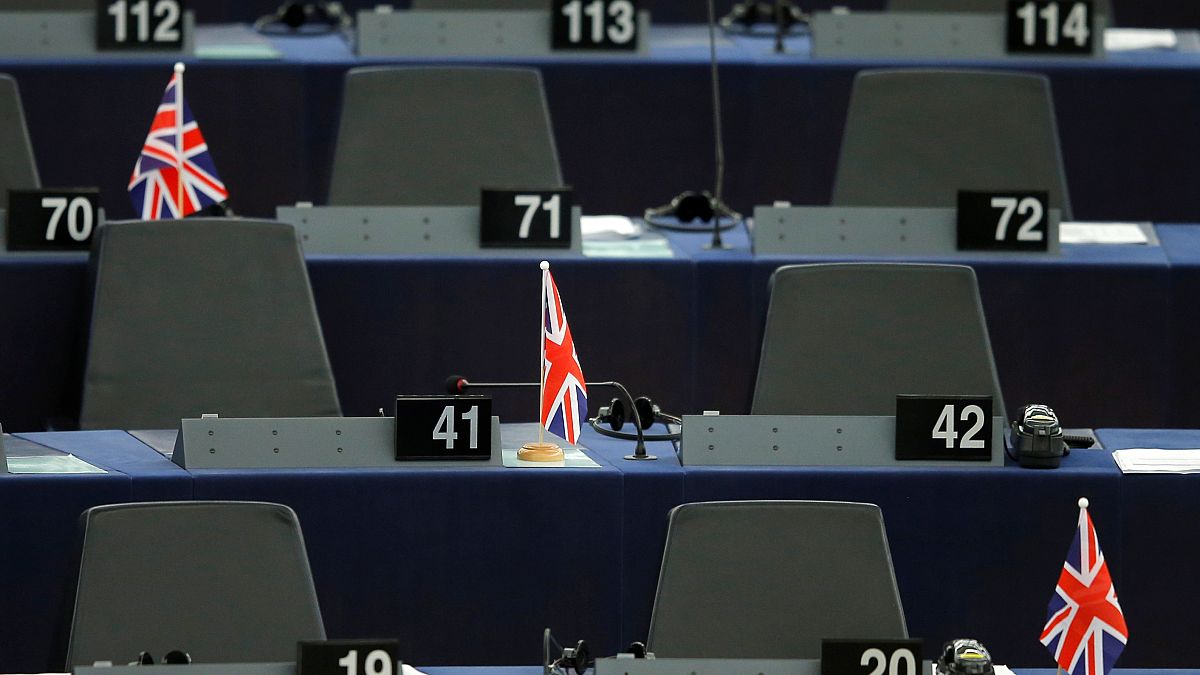The UK is almost certain to take part in the vote to elect MEPs in May, after the Brexit process was extended to October.
Following the agreement to prolong the United Kingdom’s membership of the European Union until October 31, the country will almost certainly be obliged to take part in forthcoming elections for the European Parliament.
These will take place across Europe between May 23-26; in the UK the scheduled date is Thursday, May 23.
The UK vote could be cancelled if the negotiated Brexit agreement is approved by the British parliament, opening the door for the UK to leave the EU. But after three defeats for the deal in the House of Commons, divisions remain entrenched and the process paralysed – nearly three years after the EU referendum.
There are different voting systems across the EU – and within the UK. All are versions of proportional representation (PR), different from the “First Past The Post” method which elects MPs to the UK parliament at Westminster.
- Read more: What does the European Parliament do?
- Read more: European Parliament elections: all you need to know
How is the vote organised in the UK?
The UK will elect 73 Members of the European Parliament (MEPs), out of a current total of 751.
These are divided across 12 electoral regions in the UK – nine of which are in England, with the other three in Scotland, Wales and Northern Ireland.
Each region is allocated multiple seats. The number of seats varies from region to region, according to its population. For instance, the South East region of England elects 10 MEPs, whereas the North East has three.
In England, Scotland and Wales, voters cast a single vote for the party of their choice. Parties put forward several candidates but voters will not see their names, under the “closed list” system.
Seats are won according to the share of the vote, using a formula devised under what is known as the d’Hondt PR system. This often sees MEPs from different parties elected in an individual region – unlike Westminster constituencies that elect only one MP.
Northern Ireland, which has three seats, has a different PR system known as the single transferable vote (STV). Unlike in the rest of the UK where people can choose only one party, voters can select candidates from different parties, ranking them in order of preference. Again, a formula determines how seats are allocated.
Both PR systems help smaller parties, enabling them to win more seats for the European Parliament than they tend to at Westminster.
The deadline for those wanting to stand in the UK for the European Parliament elections was 25 April.
Who can vote in the UK?
UK citizens can vote, as can “qualifying Commonwealth citizens” who are living in the UK.
Unlike in General Elections (to the UK parliament), European Parliament elections are also open to citizens of the other 27 EU countries who are resident in the UK, if they are aged 18 or over on election day. They can vote either in their home country or in the UK, where they must register by May 7. Details are available on the UK government website and the European Parliament website.
There have been fears that many EU citizens could be deprived of their vote, if they don’t sign a special form to confirm they’re not voting in another EU country. However, there have been complaints that they were only sent the form belatedly.
- Read more: How and where can EU citizens vote across Europe?
- Read more: Brexit Guide: where are we now?
What happens if the UK leaves the EU?
Despite the extension of the Brexit process, the UK could leave the EU before October 31 if parliament passes the exit deal.
In that event, the overall number of seats in the European Parliament is set to be cut from 751 to 705.
British MEPs would not take up their seats. Instead, the UK’s seats would either be reallocated to 14 countries who are under-represented, or reserved for nations who may join the EU in the future.
How important are these elections in the UK?
Turnout in European elections in the UK is historically low, and often the vote is used as a protest against the sitting government.
However, Brexit has raised the stakes enormously. Many supporters are furious that the UK has still not left the EU, while many opponents believe there is still a chance it will never happen.
At the last vote in 2014, the United Kingdom Independence Party (UKIP) came top, winning 24 seats. This time the new Brexit Party founded by its former leader Nigel Farage is leading, according to some opinion polls.
The ruling Conservative Party, committed to delivering Brexit, is embarrassed that the vote is happening at all. The opposition Labour Party has been criticised for ambiguity over its stance on a second Brexit referendum. Several pro-EU parties favour another public vote on the UK’s membership, but are standing individually and not as part of a “Remain alliance”.
The outcome of the European elections will not be known until May 26 when all the results from across Europe are announced at the same time.
- Read more: The European Commission explained
- Read more: What does the European Council do?
